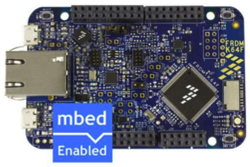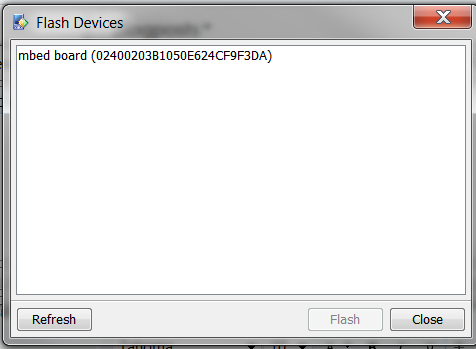Run Java Runtime on 256KB of RAM

Indeed, with the release of Java ME Embedded 8.1, a full Java runtime is now available on the Freescale K64F board, which carries 256KB RAM onboard and is equipped with a processor based on the ARM Cortex M4 architecture. Another important feature of the new Java ME SDK is support for the Eclipse IDE. The Java ME Embedded 8.1 new release page is here: http://www.oracle.com/technetwork/java/embedded/javame/embed-me/overview/index.html
The Java ME Embedded 8.1 platform is specifically designed to transfer all the useful Java functionality to devices with limited hardware capabilities and even microcontrollers. The appearance of the Java ME Embedded platform is largely due to the development of a new direction in information technology, the Internet of Things (Internet of Things, IOT). The development of IoT is associated with both new opportunities and new problems. Some tasks, such as security, work with network connections, communication with external interfaces UART, I2C, SPI, GPIO, are successfully solved by Java ME Embedded 8.1. Using Java instead of native tools reduces the time it takes to release a product and gives access to significant workforce. By the way, do you know that the Java ME Embedded development team is almost entirely located in St. Petersburg? What else interesting is prepared by our developers, you will learn more ...
Some companies are already building commercial products based on Java ME Embedded. For example, Gemalto releases 3G modules EHS5 and EHS6 http://m2m.gemalto.com/products/industrial/lga/ehs6.html , and ProSyst announced the creation of mPRM, a cloud service for managing and updating Java ME Embedded devices. h ttp:? //www.prosyst.com/about-us/news/detail/ tx_ttnews [the tt_news] = 51 & cHash = c52a9db34219b226c722b9d7b08b9f0a interest in using Java ME Embedded as a flexible alternative to the native software platforms is growing since the Java ME Embedded 8 release, and version 8.1 is a logical continuation of success.
')

As I said, the new version brings Java ME Embedded into the world of microcontrollers based on ARM Cortex M. Freescale K64F architecture processors is a prototyping platform for the Freescale Kinetis K64 series with a very attractive price. Form factor K64F is compatible with the Arduino R3 and allows you to use a lot of expansion cards. The FRDM-K64F is based on the MK64FN1M0VLL12 MCU (120 MHz, 1 MB Flash, 256 KB RAM, low-power, crystal-less USB, 100 Low profile Quad Flat Package (LQFP)). The FRDM-K64F has a three-color diode and two buttons connected to the GPIO ports, as well as an accelerometer-magnetometer FXOS8700Q. All embedded peripherals are available and can be used in Java ME applications. As usual, the best way to get started with the platform is to read the Getting Started Guide and the Getting Started Guide.

About a week ago, all the formal members of the Eclipse PMC (Project Management Committee), Eclipse IP Team and EMO (Eclipse Management Organization) gave the go-ahead to release the Mobile Tools plugin for Java TM (MTJ) 2.0, which runs the Java ME SDK. Now creating applications in Eclipse Java ME, deploying and debugging them on embedded platforms is as simple as writing Java SE applications for the desktop.

Another nice new Java ME SDK 8.1 is the Java runtime programmer for Freescale K64F. You can use it immediately after installing the Java ME SDK.
1. Click the Device Manager 8.1 in Windows Tray2. Click on the Flash button and select your device, previously connected via USB K64F.
3. Enjoy: The Java ME SDK will automatically flash your device with the latest version of Java ME Embedded Runtime.


You can always find the latest information and news about Java ME Embedded and Java ME SDK in our blog https://blogs.oracle.com/javame/
The best way to ask Java questions for embedded devices is here: https://community.oracle.com/community/java/java_embedded/java_me_embedded
A great source of information on Java ME Embedded is docs.oracle.com/javame .
Source: https://habr.com/ru/post/243549/
All Articles